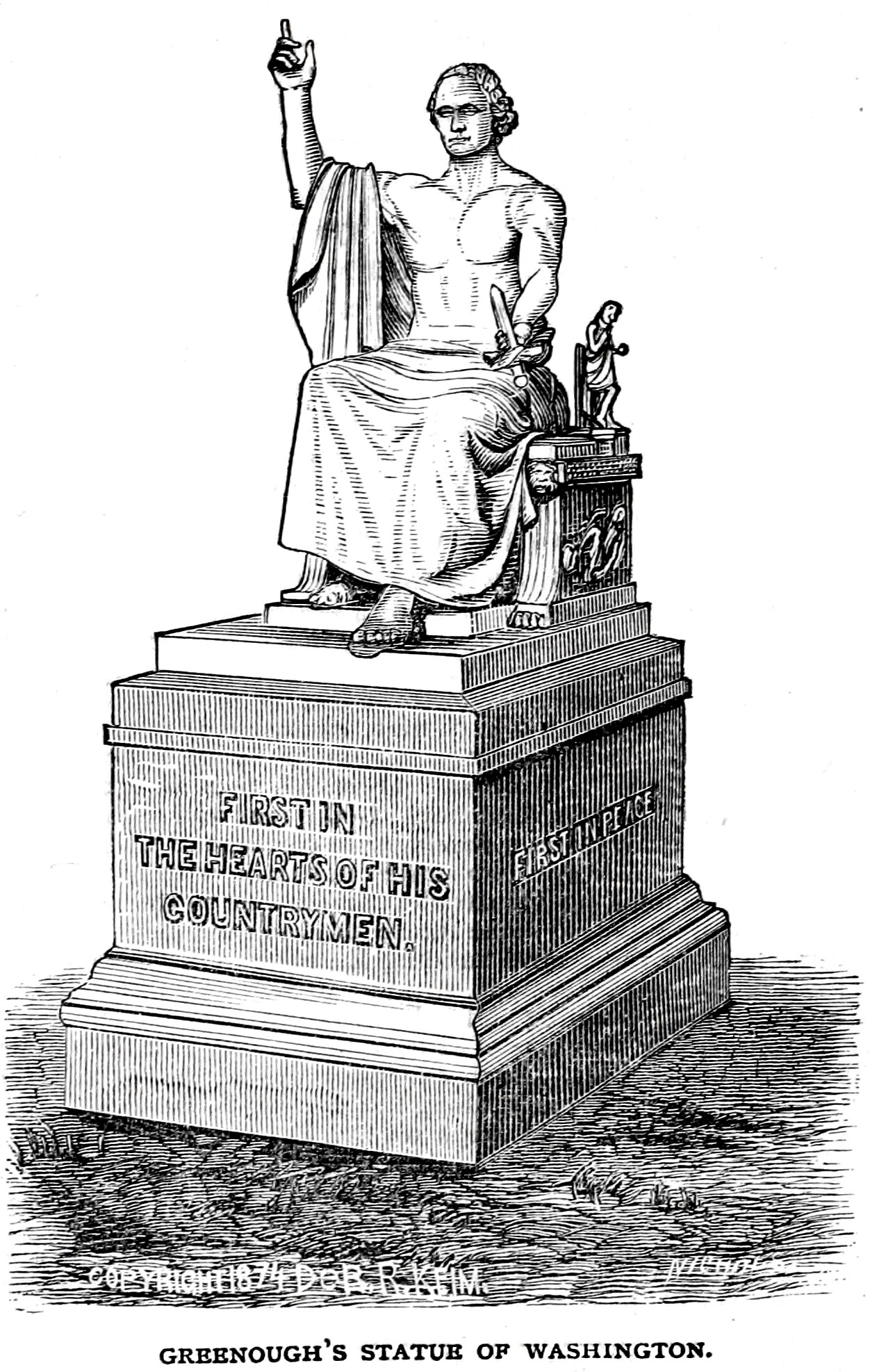Greenough's Washington

In the E. Park is the colossal statue of George Washington, the father of his country, by Horatio Greenough, of Mass., ordered by Congress, 1832, for the Rotunda of the Capitol, made in Florence, Italy, was 8 years in completion, weighs 12 tons, if erect would be 12 ft. high, and cost, including sculptor's work, freight, removals, and attendant expenses, $44,000; of this $5,000 were for transportation from the Washington navy yard to the Rotunda, about 1 m. The large size of the statue has occasioned considerable embarrassment. It was designed by Congress that it should be suitable to the interior of the Capitol. It was found entirely out of proportion there. Its final resting place is yet a matter of doubt.
In the figure, the right hand points to heaven, and the left, advanced, holds a Roman short sword, the handle presented. Over the right arm and lower parts of the body falls a mantle. The seat is ornamented with acanthus leaves and garlands of flowers. The carvings in the back admits of a view of the back of the statue. A small figure of Columbus rests against the left arm of the seat, and of an Indian against the right. In basso relievo on the right of the seat is represented Phæton in his car, drawn by fleet steeds, allegorically, the rising sun, and the crest of the arms of the United States. On the left are represented N. and S. America, as the infant Hercules strangling the serpent, and Iphiclus on the ground shrinking from the contest. The back of the seat bears the inscription, “Simulacrum istud ad magnum Libertatis exemplum nec sine ipsa duraturum. HORATIUS GREENOUGH, Faciabat”. (This statue is for a great example of Liberty, nor without Liberty will the example endure. HORATIO GREENOUGH, Sculptor.) The pedestal is 12 ft. high, and of solid blocks of New England granite. The inscriptions are: S. face, “First in Peace;” N., “First in War”; W. “First in the hearts of his Countrymen.” A better effect for the statute, and particularly softening its necessarily coarse lines, would be secured by elevating the pedestal to a height of at least 25 ft.
In 1840 a United States frigate was despatched by Congress to bring the statue to the United States. The hatches, however, were not sufficiently large to admit it into the hold. A merchant ship, the Sea, was chartered and altered to accommodate the unwieldly mass. In 1841 it arrived and was placed in the rotunda of the Capitol. The main door was cut away to admit it, and a pier of masonry erected beneath the pavement to support it. Here it was out of proportion, and in 1842 it was removed to the E. Park, where it stood for many years beneath an uncouth shelter of pine boards. The statue, while admired as a work of art, has been much criticized as a misconception of the character in which is the subject held in the hearts of his country-men. A foreign writer has designated it “a sort of domestic Jupiter.”
Keim's Illustrated Hand-book by De B. Randolph Keim, 1888 Pages 60 & 61. (PDF)